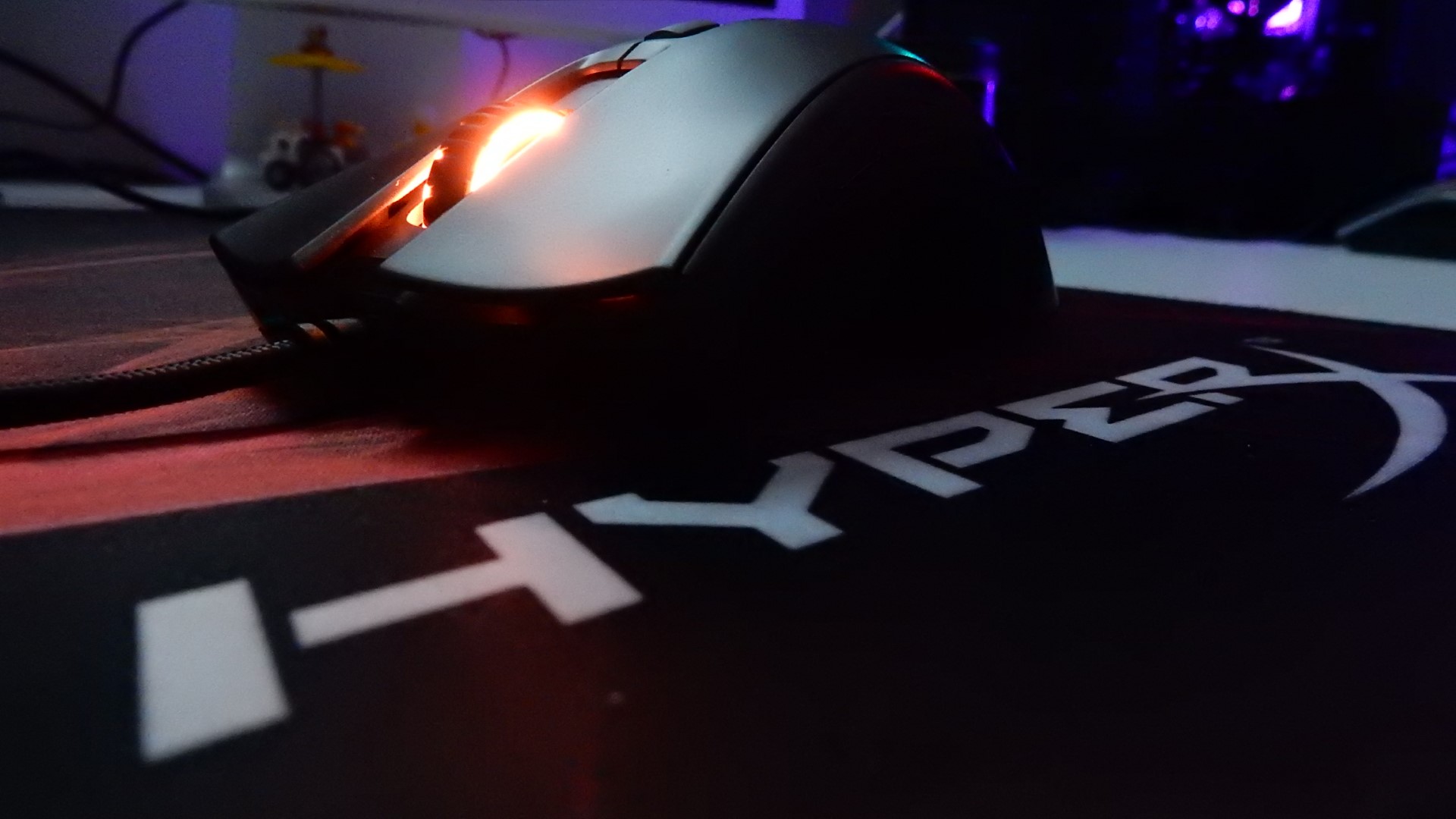HyperX Pulsefire FPS Pro Overview
When it comes to the overall design of the FPS Pro, HyperX has implemented a somewhat basic shape to the mouse body and layout. While you won’t find any exaggerated curves or heavily molded grips, you will find wide, sweeping left and right mouse buttons. With dimensions of 71mm (W) x 128mm (L) x 42mm (H), the FPS Pro leans towards the larger side of the scale, and definitely felt large in my hand compared to other mice, even the slightly smaller Pulsefire Surge.
A single, large gunmetal grey plastic body panel makes up the majority of the contact surface of the mouse, while the same grey plastic comprises the rest of the mouse body.
From the top, we can see that the FPS Pro features a symmetrical design, with the only real outlier to this being the two thumb buttons on the left side of the mouse. The left and right mouse buttons are integrated into the previously mentioned single piece of plastic that makes up the top portion of the mouse. Both the left and right buttons have a “scooped” design that gives a wide concave surface for your fingers to rest upon. The smooth surface of the plastic allows you to adjust your finger position as needed, while not feeling like your fingers are sliding around on the mouse. Situated between the left and right mouse buttons is a slightly textured mouse wheel, complete with RGB illuminated sides, that offers a slightly ridged scrolling motion. The mouse wheel can also be clicked, and it’s functionality changed via the HyperX NGenuity software. Just behind the scroll wheel is a single button that by default adjusts the resolution of the FPS Pro’s Pixart 3389 optical sensor. At the back of the top of the mouse we are presented with an illuminated HyperX logo, which can be customized within NGenuity.
Moving to the left side of the Pulsefire FPS Pro we find a large textured rubber grip that takes up the majority of the side. The surface of this rubber section is covered in a slightly raised, “hatched” pattern that I found to be quite comfortable, providing a good grip. Just above where your thumb rests are two buttons, that by default function as forward and back buttons. Reaching these buttons with your thumb is quite easy, and there is no ridge or outline to move past, which we have encountered on some other mice. These buttons can also be customized in NGenuity.
Over on the right side of the mouse we find the same hatched rubber grip from the opposite side. There is a slight bit of curvature for your fingers that rest on this side of the mouse, but nothing too extreme.
Up front we have a very basic mouse layout, with a braided cable exiting from the center of the mouse. The braided cable has a reinforced rubber sheath for extra durability, as is pretty much standard a standard at this point.
Looking at the underside of the mouse gives us a view of two large PTFE feet; one at the front of the mouse and one at the rear. This type of material is the go-to for 99% of mice out there, and provides a good balance between performance and longevity. At the center of the FPS Pro is a small opening that reveals the Pixart 3389 optical sensor. This sensor is considered to be one of the better optical sensors and offers a DPI range between 100 and 16,000, which is adjustable via the DPI button on the top of the mouse.









